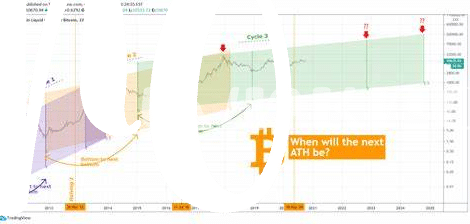🚀 the Birth of Bitcoin: a Tech Game-changer

Imagine a world where sending money is as easy as sending an email. That’s the kind of revolutionary change we saw with the creation of Bitcoin. Back in 2009, a person (or group) under the pseudonym Satoshi Nakamoto introduced Bitcoin, turning the idea of money on its head. Before Bitcoin, all transactions relied on a middleman, like a bank, to ensure trust. Bitcoin changed the game by creating a system where transactions are verified by a network of computers, not banks or governments. This isn’t just about sending money without a middle person; it’s about creating a new kind of money that is entirely digital and operates on trust generated through cryptography and community consensus.
This innovation sparked the beginning of a tech revolution. The table below succinctly outlines the transition from traditional banking to the decentralized marvel that is Bitcoin:
| Before Bitcoin | After Bitcoin |
|---|---|
| Financial transactions required banks as intermediaries. | Direct peer-to-peer transactions without the need for intermediaries. |
| Trust placed in financial institutions. | Trust placed in cryptographic verification and decentralized consensus. |
| Limited accessibility and transparency in the financial system. | Increased accessibility and transparency with an open-source ledger. |
This shift not only challenged the traditional banking system but also offered a glimpse into a future where financial transactions could be more inclusive, transparent, and secure. It’s a leap towards a world where the control and movement of money are more in the hands of the individual than ever before.
🛠 the Role of Major Technological Updates
As Bitcoin continues to evolve, it’s not just about being a digital currency anymore. Major technological upgrades play a crucial role in shaping its journey. Think of these updates as the secret sauce that makes Bitcoin more efficient, secure, and user-friendly. Every time developers introduce a new feature or improvement, it’s like giving Bitcoin a turbo boost that can help its price soar. These upgrades are not just about fixing bugs; they’re about taking Bitcoin to the next level, making transactions faster and cheaper, and ensuring that the network can handle more users. This continuous improvement is crucial for Bitcoin’s acceptance and growth. And for those keeping an eye on the crypto space, these technological leaps are often seen as a green flag, showing that Bitcoin is not only here to stay but is also getting better with age. To dive deeper into how these technological advancements impact Bitcoin and other digital currencies, check out an in-depth analysis at https://wikicrypto.news/bitcoin-vs-central-bank-digital-currencies-2024-update.
💹 How Innovations Propel Bitcoin’s Price Skywards

In the fascinating world of digital currency, new tech breakthroughs act like a boost, sending Bitcoin’s value to impressive heights. Picture it like a race car, where each innovation is a turbocharge pushing it faster. 🚀 From smarter, safer ways to keep our Bitcoin tucked away, to making transactions quicker than a snap, these upgrades grab everyone’s attention, sparking interest and excitement. Imagine a world where sending money is as easy as sending a text – that’s the magic these breakthroughs bring. 🌟 This buzz doesn’t just stay in the tech community; it catches the eye of investors and everyday folks, making everyone eager to be a part of the Bitcoin journey. As more people jump in, demand goes up, and like a rare, sought-after toy, the price of Bitcoin climbs. It’s a thrilling cycle of innovation and excitement, driving Bitcoin’s price to new horizons. 🚀💼
🔗 Blockchain Beyond Bitcoin: the Ripple Effect

Imagine a world where Bitcoin isn’t the only star in the vast universe of blockchain. 🌌 As this innovative technology continues to evolve, it’s paving the way for incredible changes beyond the realm of digital currencies. Picture blockchain as a tech tree, with Bitcoin as its root. From this root, branches grow, stretching into various sectors such as healthcare, finance, and even supply chain management. These applications are transforming how we trust, verify, and exchange information, leading to a ripple effect of efficiency and transparency worldwide. 🌍 This expansion showcases the potential for blockchain to revolutionize more than just money – it’s about creating a more secure, swift, and seamless future. And if you’re wondering how to sell bitcoin in 2024, it’s clear that understanding blockchain’s broader applications will be key. As we witness global acceptance and the technological landscape shift, it’s clear that blockchain’s journey is just beginning. 🚀✨
🌍 Global Acceptance and Technological Impact
As technology advances, the way we view and use money is transforming. Bitcoin, a digital currency once seen as just a tech novelty, is now gaining traction globally. This shift isn’t just about people buying Bitcoin; it’s about how countries and businesses are starting to accept it, making it a part of everyday transactions. This acceptance goes hand in hand with technological improvements, making Bitcoin more secure and easier to use. Imagine buying your morning coffee with a quick scan from your smartphone. That’s becoming a reality in some places! As more people and places accept Bitcoin, it tells others it’s trustworthy, which can increase its value. This change didn’t happen overnight. It’s the result of years of building trust and improving technology. The table below shows some key milestones in Bitcoin’s journey towards global acceptance and the technological leaps that helped it get there.
| Year | Milestone | Technological Advancement |
|---|---|---|
| 2009 | Bitcoin’s Creation | Blockchain Technology |
| 2014 | Major Retailers Start Accepting Bitcoin | Payment Processors Integration |
| 2020 | Legal Acceptance in Various Countries | Enhanced Security Protocols |
| 2022 | Widespread Adoption by Financial Institutions | Lightning Network for Faster Transactions |
Every step forward not only widens Bitcoin’s acceptance but also cements its role in the future of global finance, signaling a new era where technology meets monetary transactions in the most seamless way yet.
🧐 Future Tech Trends and Bitcoin’s Journey

Looking ahead, we’re venturing into an exciting era marked by dazzling tech advancements 🚀 that could further shape Bitcoin’s path. Imagine innovations like quantum computing, enhancing security 🔒 and efficiency, or the integration of artificial intelligence (AI) 🤖, offering smarter, more adaptive networks. These aren’t just futuristic dreams; they’re on the horizon, promising to make Bitcoin more accessible, secure, and perhaps even more valuable. It’s a thrilling journey, with Bitcoin continuing to be at the heart of discussions about digital currency’s potential. Amidst this evolving landscape, it’s crucial to understand Bitcoin’s origins and its foundational technology. For those curious, explore more about who created bitcoin in 2024. As we navigate these developments, the ripple effects across the global economy and our daily lives could be profound, marking another chapter in Bitcoin’s remarkable journey.
